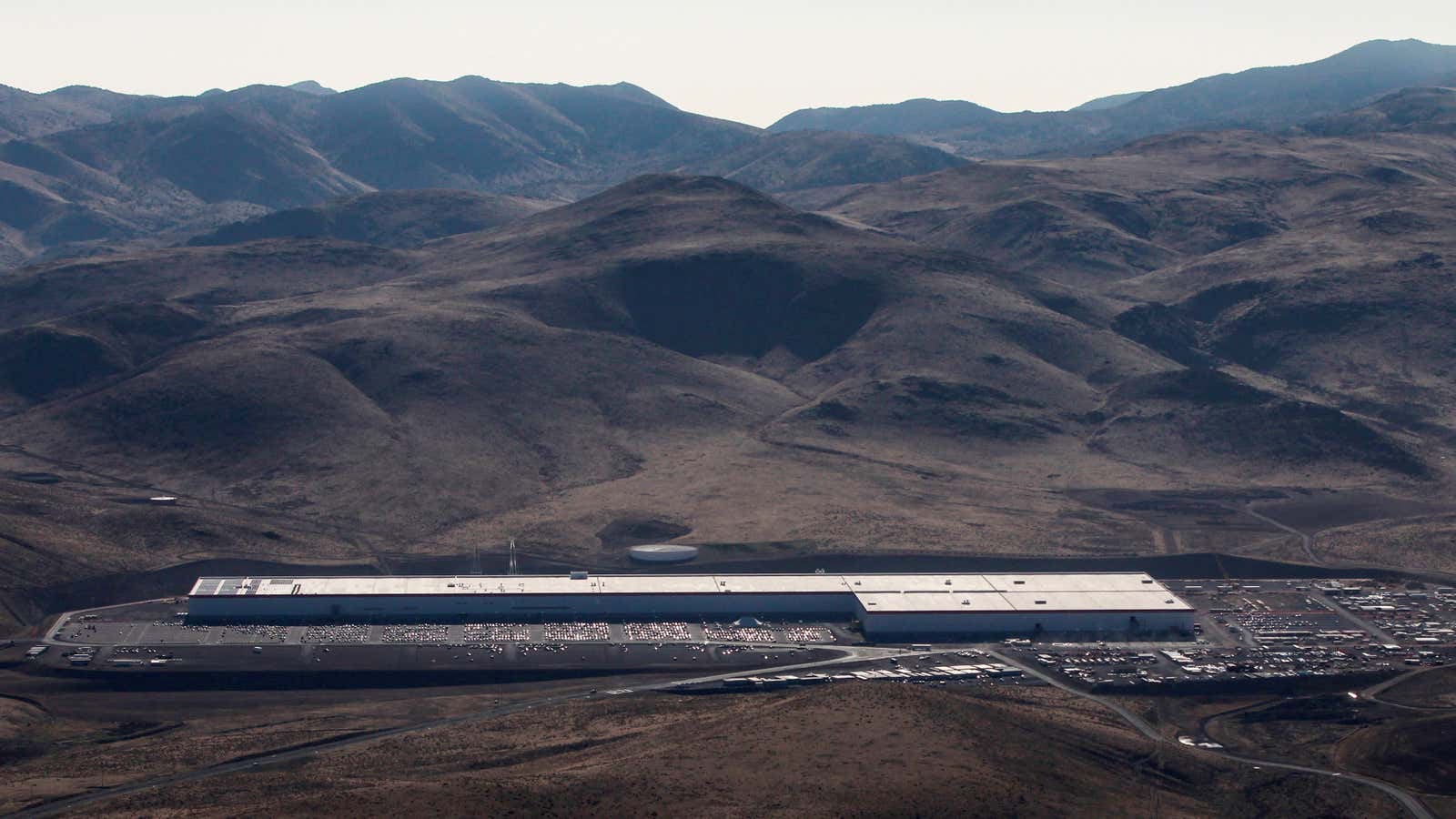Build it and they will come. The prophecy has held true for Tesla, which has become the world’s most famous electric-car maker, rolling out a wildly popular series of sedans and SUVs.
But that strategy may not hold forever. Japan’s Nikkei Asian Review reports this week (paywall) that Panasonic will not be investing in an expected expansion that would have boosted the battery manufacturing capacity of Tesla’s Gigafactory 1 by 50%. As harsh financial realities set in for Tesla, its stated goal of producing 1 million cars per year may be deferred.
It’s a major turnaround. Late last year, Panasonic CEO Kazuhiro Tsuga reiterated his commitment to add to the $1.6 billion investment in the joint factory with Tesla in the Nevada desert, where his company builds battery cells for its partner’s electric vehicles. Although Panasonic had been reporting that it was losing money on the making of those cells—more than $180 million (¥20 billion) by the end of its financial year—it appeared willing to take the hit and stick with Elon Musk, Tesla’s erratic CEO. “Though Elon’s comments are unpredictable, we will continue to monitor Tesla’s operations to ensure no chaos there and will work in step with the company,” Tsuga told Reuters.
No longer. Panasonic won’t proceed with its original investment plans in Nevada, nor follow through on early indications it would commit to Tesla’s plant in Shanghai, according to Nikkei.
But a Tesla spokesperson disputes this report. He said Tesla and Panasonic would still invest “substantial funds” into Gigafactory 1 as needed. The company could improve existing production equipment more than previously estimated to increase capacity by 35% without building new lines, and ultimately reach 50%. “We are seeing significant gains from upgrading existing lines to increase output, which allows Tesla and Panasonic to achieve the same output with less spent on new equipment purchases,” Tesla wrote by email. “Most importantly, contrary to what is implied in the Nikkei Asian Review report, our demand for cells continues to outpace supply. It remains the fundamental constraint on Tesla vehicle and Powerwall/Powerpack production.”
Tesla has been hit by a slowdown in sales, logistics bottlenecks, and thinner margins as the cheaper Model 3 appears to siphon off some sales from the premium Model S and X offerings. “Tesla continues to struggle as a ‘real car company,’ with demand collapsing for the tired Model S/X platforms and higher priced versions of the Model 3,” Jeff Osborn, an analyst at Cowen, wrote in a research note April 4. Nationwide, US auto sales have slowed to the lowest point in more than four years, reports industry research firm J.D. Power.
That hit home on April 3 when the electric-car maker missed expectations, delivering 31% fewer cars in the last quarter compared to the previous one. Tesla said difficulties transporting a “massive increase” of vehicles to Europe and China was one reason for it delivering only 63,000 cars—50,900 Model 3 and 12,100 Model S and X vehicles—compared to the 76,000 expected by analysts. As a result, Tesla lost money again, despite Musk’s promise last October that “we can be positive cash flow and profitable all quarters going forward.” But the company reiterated that demand forecasts were unchanged, with 360,000 to 400,000 vehicle deliveries planned in 2019.
